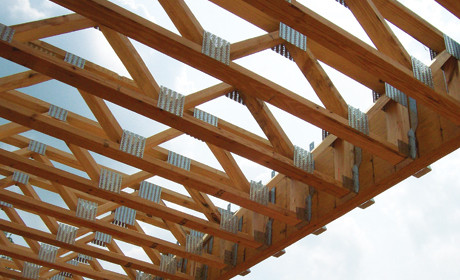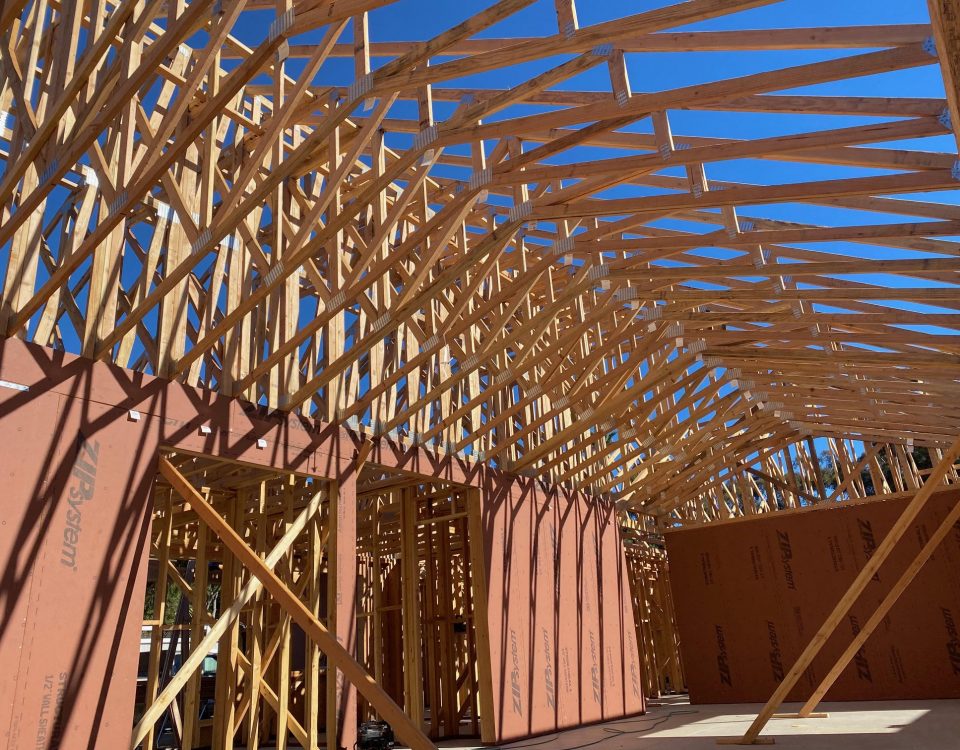How Much Weight Can A Roof Truss Hold?

Gable vs. Hip: Which is Better for Truss Roofing?
June 15, 2023
How Wooden Trusses Are Made
November 20, 2023Roof trusses are some of the strongest structures ever designed by man. Based on ancient designs that supported huge domed roofs, today’s wooden trusses are built to hold up incredible amounts of weight. While residential roofing trusses are not as strong as their steel cousins that hold up large suspension bridges and other structures, they can still hold up a great deal of weight without being compromised. Just how much weight can a roof truss actually hold, and how strong can a roof truss be for a residential application?
Roof Trusses, Strength and Load
Before talking about how much weight a roof truss can hold, it is important to understand the difference between strength and load-bearing capacity. Load is simply the amount of weight a structure can support from a given direction. From this perspective, trusses are extremely strong and are able to hold up roofing materials of almost any weight, including tile, stone and slate. However, what most people mean when they ask how strong a truss is, instead of how much weight it can bear from the top, is how much strength it will exhibit in the face of high winds, which may cause twisting or stress to come from more than one direction.
Roof trusses can bear heavy loads from the top because they transfer the weight load downward and outward to the load-bearing walls of the building. The chords inside the trusses channel the stress of the load away from the main beams and downward, causing it to dissipate. Stress is always deflected better when chord members act together. When too much stress is placed on a single member, particularly in a single spot, you can have cracking or breaking. Trusses avoid this problem by dissipating that force over a much larger number of members.
However, there is more to calculating load than this. Trusses actually carry two types of loads: live loads and dead loads. Live loads are temporary loads such as wind, precipitation, or someone walking on the roof. These loads are brief and are quickly gone. Dead loads, on the other hand, including the roofing materials and other structural weight that is present at all times.
Therefore, California publishes a table of both live and dead load requirements for inhabited and uninhabited spaces. This helps builders determine if their trusses are up to code for required load limits. In most cases, truss companies build to well within these requirements to account for unexpected live loads such as sudden high winds or storms. In areas where heavy snow is possible, different limits may be in effect.
How Can I Be Sure My Truss Roof Is Strong Enough?
The best way to navigate the complicated world of truss load and strength calculations is to work with a reputable truss builder who consistently provides quality products. At Stone Truss, we have been working with San Diego builders for decades to provide the very best in roofing and flooring trusses. Give us a call today to learn how we can help you meet codes and build strong, beautiful structures that will stand the test of time!


